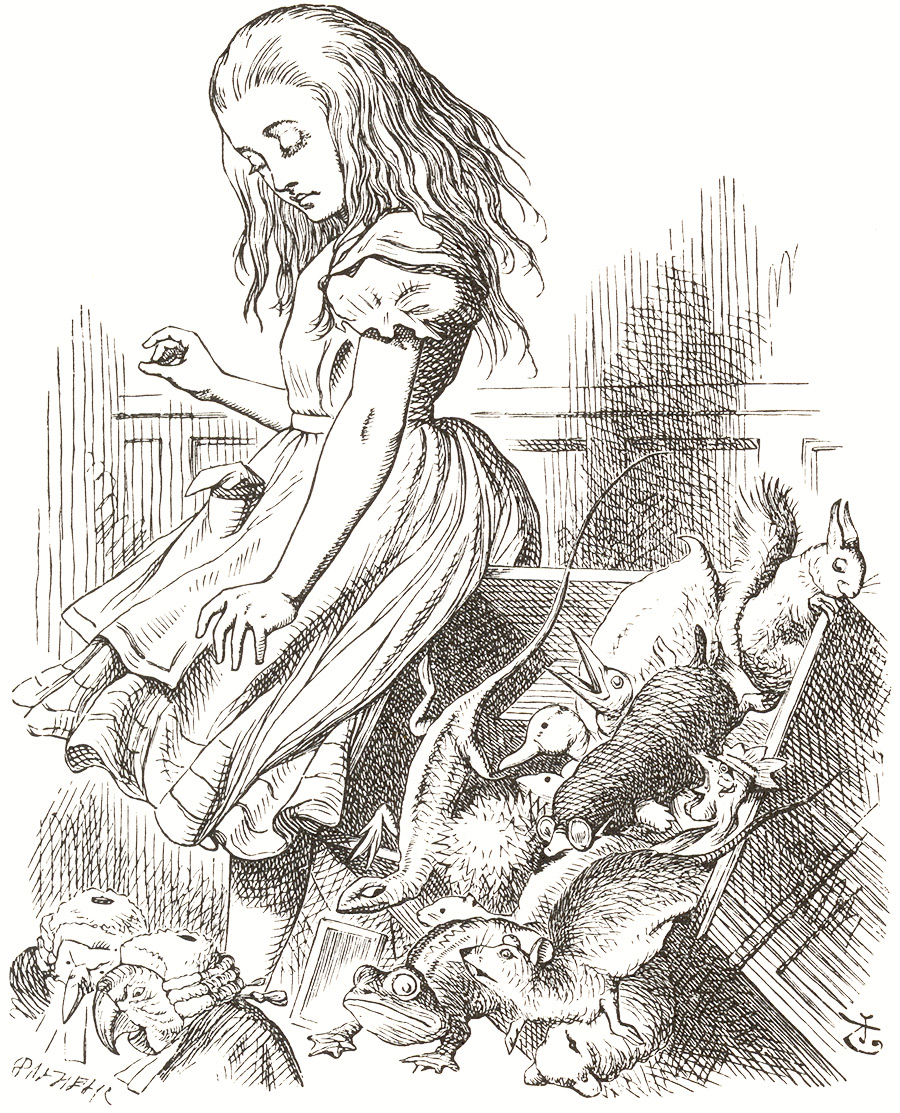
“Well, I’d hardly finished the first verse,” said the Hatter, “when the Queen bawled out ‘He’s murdering the time! Off with his head!’ ”
Chapter VII
As a child, Lewis Carroll frequently entertained his family with his own plays and puppet shows. As an adult, he continued to create marionette plays and magic lantern shows for his child-friends, feeling that “all existing plays...are overpoweringly dull - no idea of fun in them.”
When it came to staging Alice, Carroll had very specific ideas. With his trademark perfectionism, he negotiated with playwrights, composers, and actors for almost twenty years before a production to his satisfaction was staged in 1886.
Since then, numerous pantomimes, plays, operas, ballets, musicals, and television and film adaptations have appeared, starring actors from Cary Grant to Meryl Streep, and in many instances, straying quite far from the original source material. (YouTube - itself a kind of Carrollian rabbit-hole - is a great source for a quick survey of the many adaptations.)
Carroll granted William Boyd the right to compose music to the nonsense verse in Alice. Carroll was, as ever, involved in the process, and added additional lines to the poem “Tis the voice of the lobster”.
In 1886, Carroll was approached by aspiring playwright Henry Savile-Clarke, who wished to stage Alice as a two-act operetta. Dodgson agreed, on the condition that no coarseness be allowed. Their collaboration was a positive one; Carroll contributed additional verse to the production, as well as numerous suggestions for child actors to play various roles.
The play, starring 12-year-old Phoebe Carlo, opened on December 23, 1886 at the Prince of Wales Theatre in London to positive reviews. Savile-Clarke’s adaptation remained the standard for the next forty years.
English composer and folksong historian Lucy Broadwood created new melodies for nineteen of Carroll’s verses, illustrated by Charles Folkard.
Alice’s popularity has resulted not only in many theatrical adaptations but in dance as well. This early ballet, “a fantasy in three phases” from Archibald De Bear’s revue “R.S.V.P.” at the Vaudeville Theatre in London, ran for nearly 300 performances.
Theater powerhouse Eva Le Gallienne adapted, directed, and starred as the White Queen in this production, the most successful stage adaptation of Alice ever performed. Beginning at Le Gallienne’s Civil Repertory Theatre and later moving to Broadway, the play featured more than fifty cast members, puppets, music, and dance, as well as a live cat and pig. Le Gallienne continued to be involved in revivals of her production for nearly fifty years.
This Paramount production, which starred 19-year-old Charlotte Henry in the title role, along with Cary Grant, W.C. Fields, and Gary Cooper, was such a critical and box office failure that another live action adaptation was not attempted until Tim Burton’s 2010 film, which grossed over $1 billion.
Photographer Richard Avedon captured the Manhattan Project’s process of adapting a very different Alice for the stage. Time called the successful production, directed by Andre Gregory, “...an exciting, absorbing, vertiginous descent into a laughing hell.”